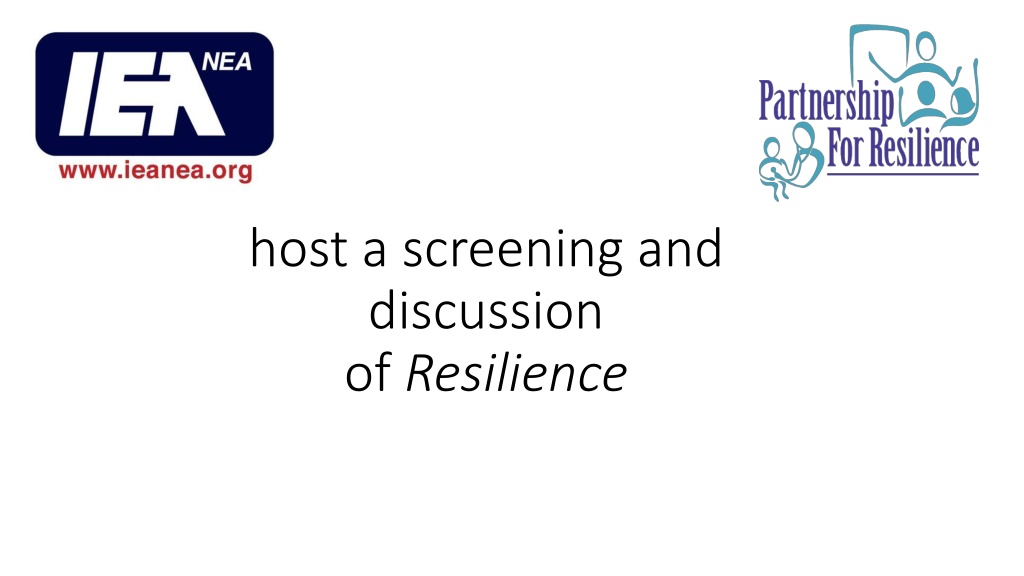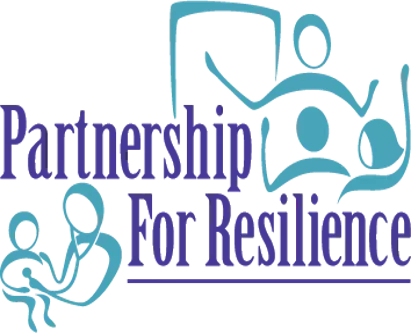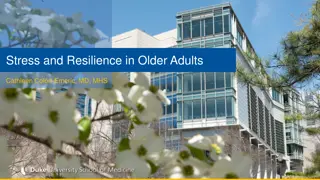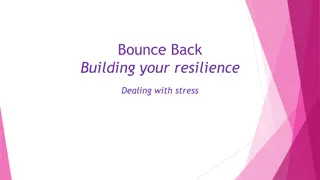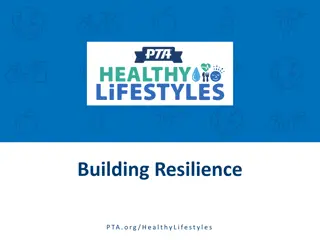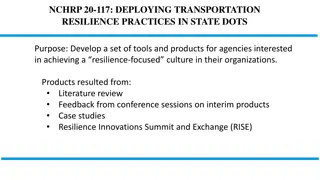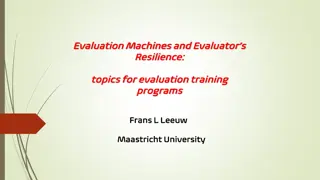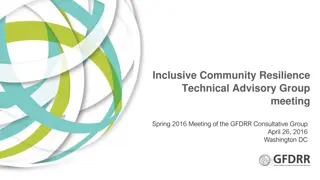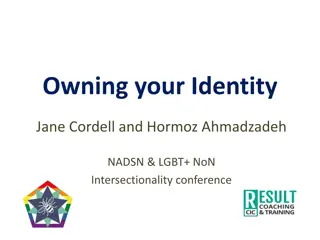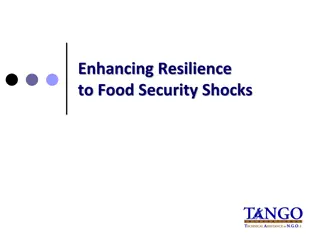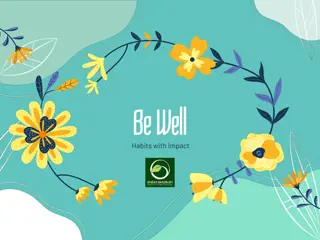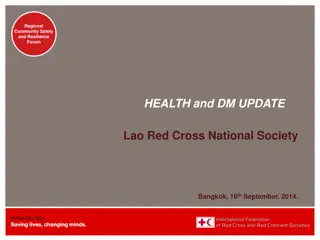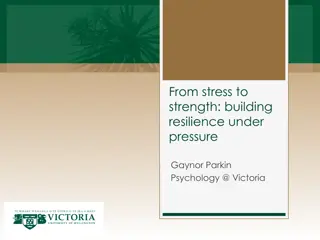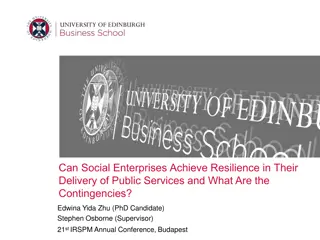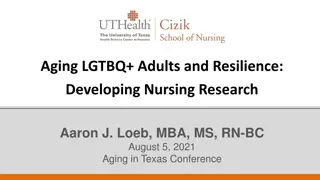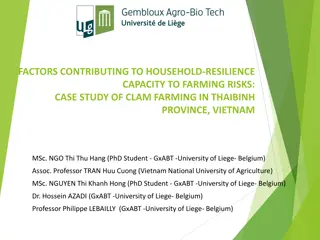Embracing Resilience for Healthier Lives
Resilience is not innate but a skill that can be learned and practiced, essential in countering Adverse Childhood Experiences (ACEs) and toxic stress. Panelists emphasize the importance of supportive environments and education in building resilience among children. Insights from educators and experts underscore the need for nurturing relationships and developing capabilities for optimal child development.
Uploaded on Feb 28, 2025 | 0 Views
Download Presentation

Please find below an Image/Link to download the presentation.
The content on the website is provided AS IS for your information and personal use only. It may not be sold, licensed, or shared on other websites without obtaining consent from the author.If you encounter any issues during the download, it is possible that the publisher has removed the file from their server.
You are allowed to download the files provided on this website for personal or commercial use, subject to the condition that they are used lawfully. All files are the property of their respective owners.
The content on the website is provided AS IS for your information and personal use only. It may not be sold, licensed, or shared on other websites without obtaining consent from the author.
E N D
Presentation Transcript
host a screening and discussion of Resilience
ICAAP mission: To promote the right of all children to live happy, safe, and healthy lives, to ensure children receive quality medical care from pediatricians (the most qualified physicians to deliver this care), and to assess and serve the needs of its membership. IEA mission: To effect excellence and equity in public education and to be the advocacy organization for all public education employees.
Resilience is the ability to thrive, adapt and cope despite stress, a natural counter-weight to ACEs, not an innate characteristic, a skill that can be taught, learned and practiced. The more resilient, the more likely able to deal with negative situations in a healthy way. Everybody has the ability to become resilient when surrounded by the right environments and people. Prevent Child Abuse America
AAP definition of toxic stress: When a person experiences strong, frequent, or prolonged activation of the body s stress response systems in the absence of the buffering protection of a supportive, adult relationship.
Cynthia Manfold, Kindergarten Teacher The sad thing is a lot of our students think that what they are going through is normal, this is their normal. If no one has given them anything to think otherwise, I think that is where the cycle just keeps going and going.
Dr. Jack Shonkoff, Harvard University We need to do more than give parents information and advice: we need to build their capabilities. Scientific research points to the presence of a stable, caring adult in a child s life as the key to building the skills of resilience.
Exposure to early adversity and trauma literally affects the structure and function of children s developing brains. Dr. Nadine Burke Harris, Center for Youth Wellness If all day long you feel like a truck is coming at you, day after day after day, that s going to take a toll on the body. Dr. Victor Carrion, Stanford University
If [people] already know that these [ACEs] are common, they are more likely to be relieved, I think, than frightened...they don t feel alone anymore. That I m not the only one that experienced these kinds of things. - Dr. Robert Anda, Centers for Disease Control and Prevention Indicators of Family Dysfunction Abuse and Neglect 6. Mentally ill, depressed or suicidal person in the home 1. Child physical abuse 7. Drug addicted or alcoholic family member 2. Child sexual abuse 8. Witnessing domestic violence against the mother 3. Child emotional abuse 9. Parental discord indicated by divorce, separation, abandonment 4. Physical Neglect 5. Emotional Neglect 10. Incarceration of any family member
www.Partnership4Resilience.org IEA Connect - 1-8444-432-1800 Email:
